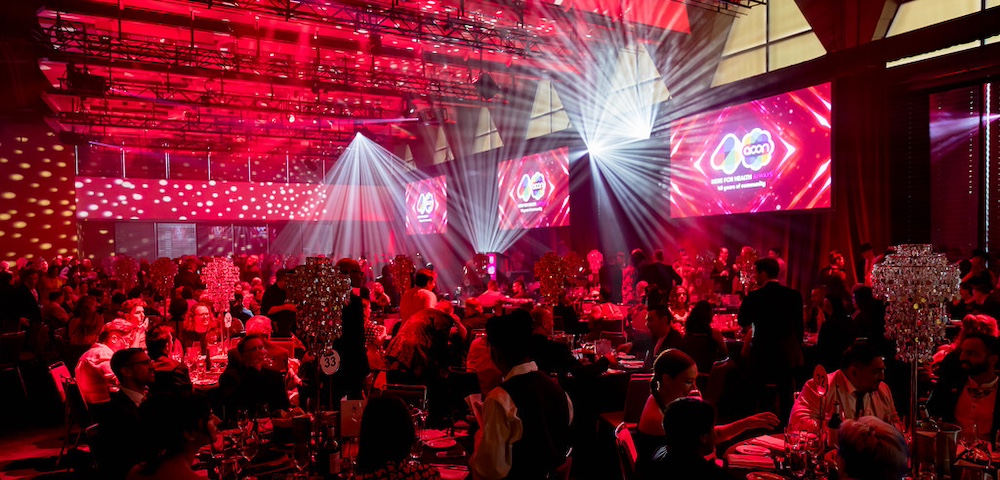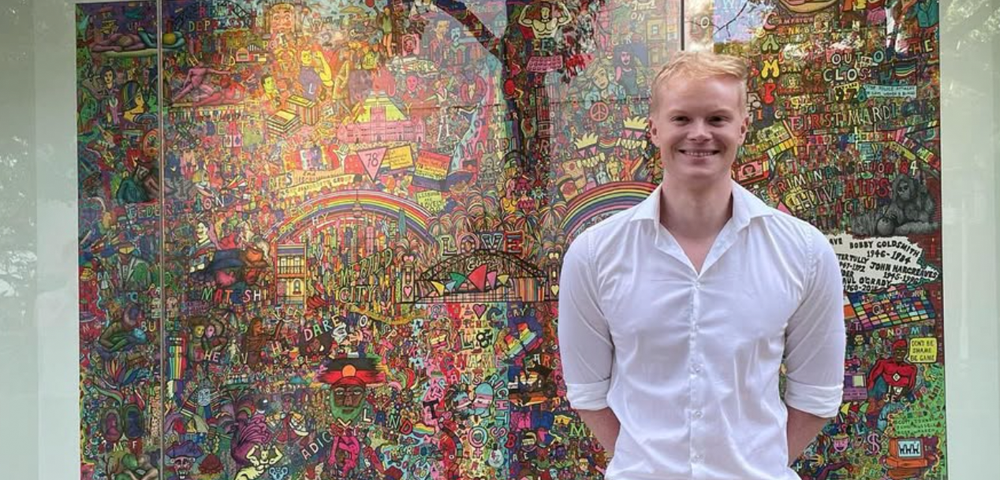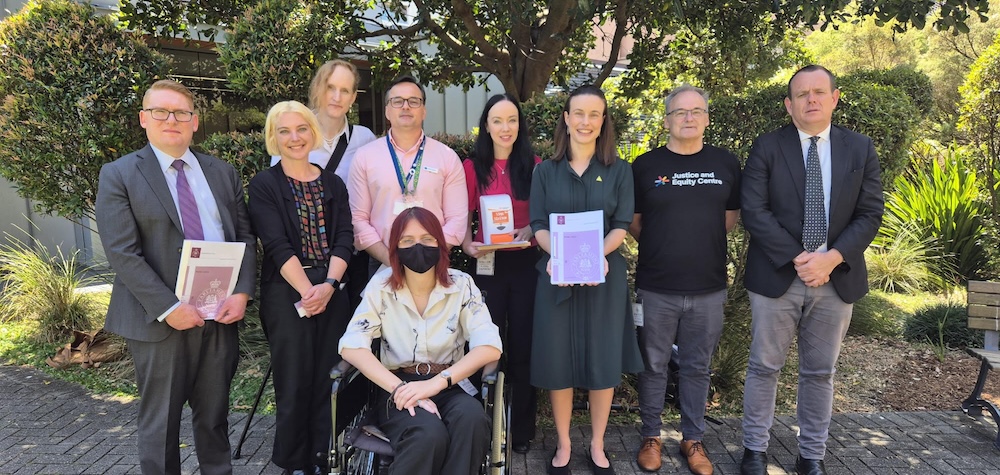
A Harbour Bridge story
Mervyn Chapman was once a fairly prominent member of Sydney’s gay community, who lived at Glebe Point, was a company director, antique collector and gardener. He loved beautiful things and beautiful people.
However, he was probably most famous for his fully tattooed body suit, originally begun by Max Chater, a Kings Cross tattoo artist, and then added to, piece by piece, by famous artists around the globe. In the 1980s and unbeknown to him, his suit was described as the most beautiful tattoo in the world in an English magazine. A short film about his life was made for SBS television.
Half a century earlier, the schoolboy Mervyn had watched the building of the Sydney Harbour Bridge from the family home in Glebe Point Road.
Like so many Sydney people, Mervyn’s father wanted to go to the official Bridge opening in March 1932. Through his position as one of the commodores of the Sydney Yacht Squadron, Captain Chapman was allocated tickets for raised seating not far from the official dais. Mervyn’s father wore his naval uniform, his mother her Sunday best. For the first time, aged 13, Mervyn wore his long pants.
March 1932 was the height of the Great Depression. Thousands of people were unemployed through no fault of their own. Despite the hard times, the building of the Bridge had proceeded and had become a symbol that good times were just around the corner. Jack Lang, the fiery Labor premier of NSW, and Sir Philip Game, governor of New South Wales, did not get along very well. Many people feared a left-wing or communist revolution. On the other side, there was a strong local right-wing organisation called the New Guard, with similar aims to Hitler’s Nazi movement in Germany and Mussolini’s fascist government in Italy -“ to guard the state from a communist takeover.
It was in this atmosphere that the bridge was completed and the decision made about who was to open it. Many thought it should be the king but a royal tour was considered far too costly. As a result, they assumed it would be the governor Sir Philip Game, the NSW representative of the British monarch.
But the British had not paid for the bridge. It was designed, built, and paid for by the people of New South Wales. Sixteen Australians had died building it. It should, Lang decided, be opened by someone elected by the people. To avoid future controversy, Jack Lang chose -¦ himself.
This gets us back to young Mervyn Chapman at the opening ceremony. A rumour had passed through the crowd that Jack Lang was likely to be assassinated before he could open the bridge.
As the ceremonial procession was taking place, there was a sudden commotion and the crowd leapt to their feet. Everyone leant forward to get the best view of what was happening. Was it the assassination of Lang? Was the premier about to be thrown off the bridge? Was something even more sinister about to happen? The atmosphere was electrifying, but more for Mervyn than for anyone else.
The man who leant on top of Mervyn, straining to see what was happening, had a hard cock under his flannel trousers. And he just happened to rub it over the crack in Mervyn’s arse. Possibly it took only a few seconds, although maybe longer, because the man behind Mervyn seemed oblivious of everything but the roar of the crowd and the sight of Colonel de Groot of the New Guard slashing the official ribbon with his sword and opening the bridge before Lang could do it. De Groot was pulled from his horse and most unceremoniously marched off the bridge. The two pieces of the ribbon were tied together and the bridge opening ceremony proceeded without further untoward activity.
But for young Mervyn it was an awakening. It was that first moment when Mervyn discovered he liked cock. He died a few years ago, but delighted in telling gay friends about the opening of his bridge.









